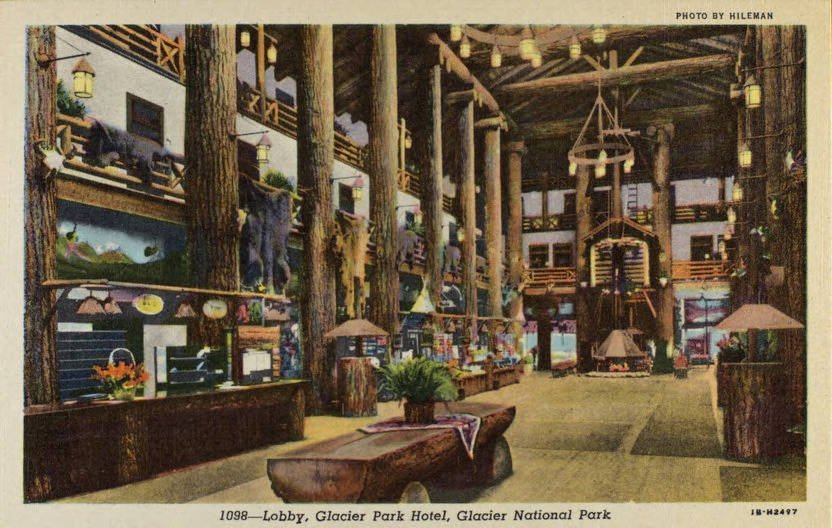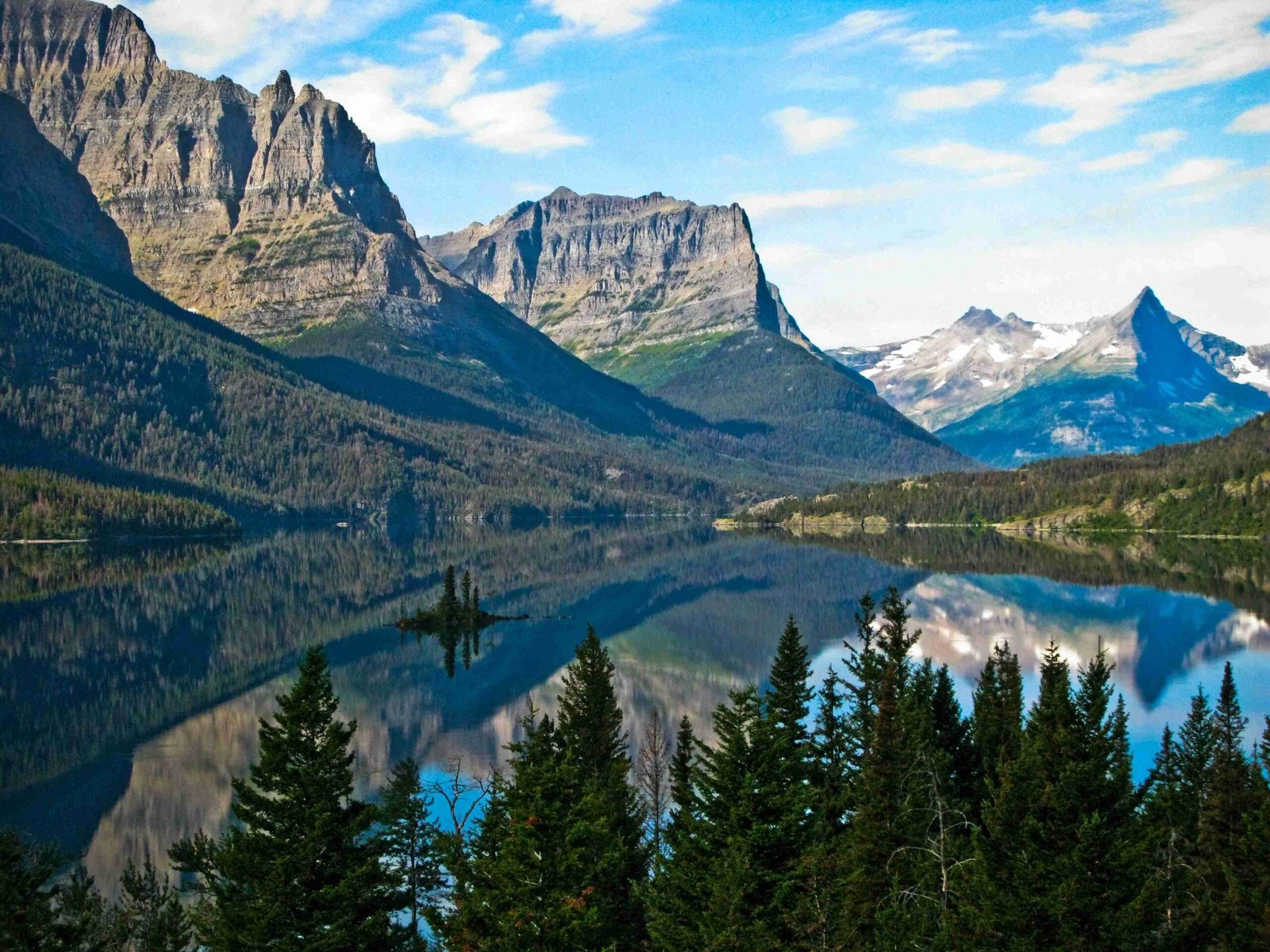The Glacier National Park Huckleberry Lookout hike is an 11.6-mile out-and-back trail with a challenging 2,725-foot elevation gain. This demanding trek offers panoramic views of the Livingston Range and Apgar Mountains. Hikers should be prepared for a 6-8 hour journey through diverse terrain, including steep climbs and potential wildlife encounters. The trailhead is located 6 miles north of Apgar Village along Camas Road, providing access to one of Glacier’s most rewarding day hikes.
What Makes the Huckleberry Lookout Hike Unique?

The Huckleberry Lookout hike stands out for its combination of natural beauty, physical challenge, and historical significance. Here are some key features that make this hike a must-do for adventurous visitors to Glacier National Park:
- Panoramic Views: The lookout offers breathtaking 360-degree vistas of the surrounding landscape.
- Wildlife Opportunities: The trail is known for potential grizzly bear sightings, especially during huckleberry season.
- Historical Significance: The lookout itself is a piece of park history, once used for fire detection.
- Diverse Ecosystems: Hikers pass through various habitats, from dense forests to alpine meadows.
What Are the Trail Specifications for the Huckleberry Lookout Hike?

Understanding the trail specifications is crucial for proper preparation. Here’s a breakdown of the key details:
| Specification | Detail |
|---|---|
| Trail Length | 11.6 miles (out-and-back) |
| Elevation Gain | 2,725 feet (some sources cite 3,403 feet) |
| Estimated Hiking Time | 6-8 hours |
| Difficulty Level | Challenging |
| Trail Type | Out-and-back |
The trail’s steady elevation gain and considerable length make it a strenuous day hike. Hikers should be in good physical condition and prepared for a full day on the trail.
How to Prepare for the Huckleberry Lookout Hike?
Proper preparation is key to enjoying the Huckleberry Lookout hike safely. Consider the following tips:
- Physical Conditioning: Train for steep climbs and long distances.
- Gear: Bring sturdy hiking boots, layers for changing weather, and plenty of water.
- Bear Safety: Carry bear spray and know how to use it.
- Navigation: Bring a map and compass, as trail markings may be sparse in some areas.
- Timing: Start early to ensure you complete the hike before dark.
- Weather Check: Always check the latest weather forecast before setting out.
What Are the Best Seasons for the Huckleberry Lookout Hike?
The ideal time to tackle the Huckleberry Lookout hike depends on various factors:
- Summer (July-August): Peak season with the best weather and wildflower blooms.
- Early Fall (September): Fewer crowds and beautiful fall colors, but cooler temperatures.
- Late Spring (June): Possible snow at higher elevations, but fewer people on the trail.
Winter hiking is not recommended due to extreme conditions and avalanche risk.
What Wildlife Might You Encounter on the Huckleberry Lookout Trail?
The Huckleberry Lookout trail is known for its diverse wildlife. Hikers should be prepared for potential encounters with:
- Grizzly Bears: Especially active during huckleberry season (late summer).
- Black Bears: Common throughout the park.
- Mountain Goats: Often seen at higher elevations.
- Marmots: Listen for their distinctive whistles.
- Various Bird Species: Including eagles and ptarmigans.
Always maintain a safe distance from wildlife and never feed or approach animals.
How to Get to the Huckleberry Lookout Trailhead?
Finding the trailhead is straightforward:
- Start at Apgar Village in Glacier National Park.
- Drive north on Camas Road for approximately 6 miles.
- Look for a well-marked parking area on the left side of the road.
- The trailhead is clearly signed and visible from the parking area.
There’s ample parking, but arriving early during peak season is recommended.
What Are the Key Landmarks Along the Huckleberry Lookout Trail?
As you ascend the Huckleberry Lookout trail, you’ll pass several notable landmarks:
- Dense Forest: The first part of the trail winds through thick, shaded woods.
- Switchbacks: A series of steep switchbacks mark the middle section of the hike.
- Alpine Meadows: As you gain elevation, the forest gives way to open meadows.
- Ridge Line: The final approach follows a scenic ridge with expansive views.
- Huckleberry Lookout: The historic fire lookout marks your destination.
Each of these landmarks offers unique views and experiences, making the journey as rewarding as the destination.
What Safety Precautions Should Hikers Take on the Huckleberry Lookout Trail?
Safety should be a top priority for anyone attempting the Huckleberry Lookout hike. Consider these precautions:
- Bear Awareness: Make noise, hike in groups, and carry bear spray.
- Weather Preparedness: Bring layers and rain gear, as mountain weather can change rapidly.
- Water and Food: Pack more than you think you’ll need for a full day on the trail.
- First Aid: Carry a basic first aid kit and know how to use it.
- Communication: Cell service is unreliable, so consider bringing a satellite communication device.
- Trail Etiquette: Stay on marked trails and practice Leave No Trace principles.
By following these guidelines, hikers can ensure a safer and more enjoyable experience on the Huckleberry Lookout trail.
What Views Can You Expect from the Huckleberry Lookout?
The panoramic views from the Huckleberry Lookout are the ultimate reward for this challenging hike. On a clear day, hikers can expect to see:
- The rugged peaks of the Livingston Range to the north
- The expansive Apgar Mountains to the east
- Lake McDonald shimmering in the distance
- On exceptionally clear days, views stretching into Canada
The lookout itself provides a 360-degree vantage point, allowing hikers to take in the full majesty of Glacier National Park’s diverse landscape.
How Does the Huckleberry Lookout Hike Compare to Other Glacier National Park Trails?
While Glacier National Park offers numerous hiking opportunities, the Huckleberry Lookout trail stands out for several reasons:
- Length and Difficulty: It’s more challenging than many day hikes but not as extreme as some backcountry routes.
- Solitude: Less crowded than popular trails like the Highline or Iceberg Lake.
- Diverse Ecosystems: Offers a comprehensive sample of Glacier’s varied landscapes.
- Historical Element: The fire lookout adds a unique cultural aspect to the natural beauty.
- Wildlife Opportunities: Known for a higher chance of bear sightings compared to some other trails.
This combination of features makes the Huckleberry Lookout hike a favorite among experienced hikers seeking a full day of adventure in Glacier National Park.
References:
1. Huckleberry Mountain Trail (Glacier National Park)
2. Huckleberry Lookout Trail – Enjoy Your Parks
3. Huckleberry Mountain Lookout, Montana – 653 Reviews, Map